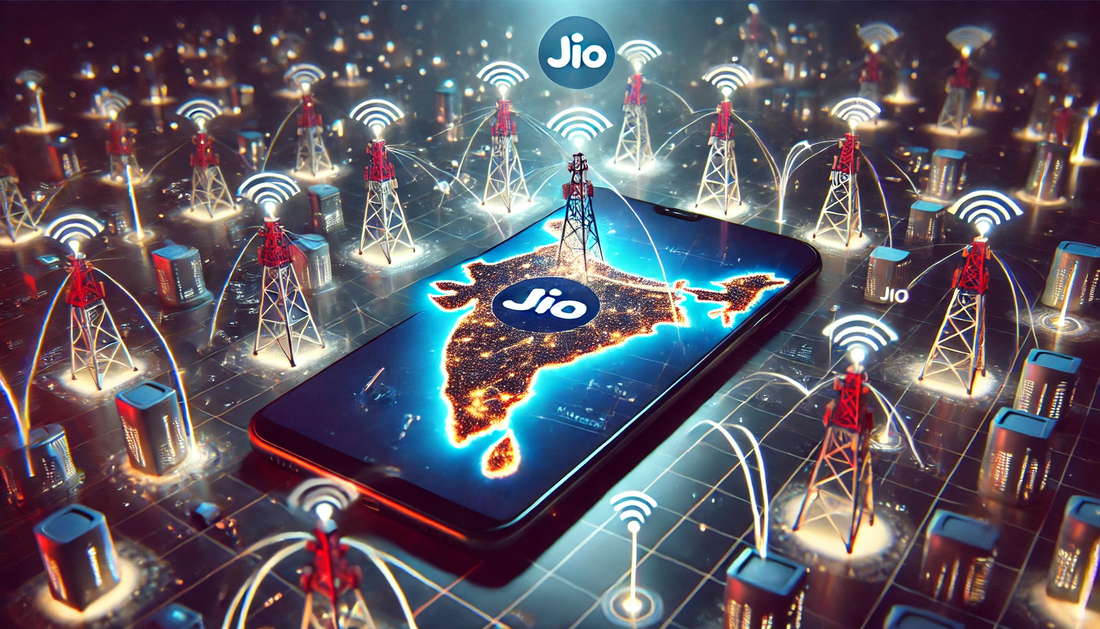In the dynamic world of business, few stories are as captivating as Reliance Jio's disruption of the Indian telecom market. For startup founders, this tale is not just inspiring but also packed with actionable insights.
Reliance Jio, a subsidiary of Reliance Industries, launched its services in 2016. Within a few years, it transformed the telecom landscape in India.
How did they achieve this? Let's dive into the strategies that made Jio a game-changer.
Understanding the Market
Before Jio's entry, the Indian telecom market was dominated by a few key players. The industry was characterized by high tariffs and limited data offerings. Jio identified a gap: the demand for affordable data.
For startups, understanding the market is crucial. Conduct thorough research to identify unmet needs. This insight can be the foundation of your disruptive strategy.
Leveraging Technology
Jio invested heavily in building a robust 4G network infrastructure. This technological edge allowed them to offer superior services at lower costs. They focused on future-ready technology, ensuring scalability and efficiency.
Startups should prioritize technology. Invest in scalable solutions that can adapt to future demands. This not only enhances service delivery but also positions you ahead of competitors.
Innovative Pricing Strategy
Jio's pricing strategy was revolutionary. They offered free voice calls and extremely affordable data plans. This aggressive pricing disrupted the market, forcing competitors to rethink their strategies.
For startups, pricing can be a powerful tool. Consider innovative pricing models that attract customers while maintaining profitability. Disruptive pricing can be a catalyst for rapid growth.
Creating a Digital Ecosystem
Jio didn't just stop at telecom services. They created a digital ecosystem with apps for music, movies, news, and more. This ecosystem increased customer engagement and loyalty.
Startups should aim to create an ecosystem around their core product. This not only enhances customer experience but also opens up new revenue streams.
Strategic Partnerships
Jio formed strategic partnerships with global tech giants like Facebook and Google. These alliances brought in significant investments and technological expertise.
For startups, partnerships can be a game-changer. Collaborate with industry leaders to leverage their expertise and resources. This can accelerate growth and innovation.
Focus on Customer Experience
Jio prioritized customer experience. They ensured seamless onboarding, excellent network quality, and responsive customer service. This focus on customer satisfaction built trust and loyalty.
Startups should prioritize customer experience. A satisfied customer is your best advocate. Invest in customer support and continuously improve your offerings based on feedback.
Agility and Adaptability
Jio's journey was not without challenges. They faced regulatory hurdles and intense competition. However, their agility and adaptability allowed them to navigate these challenges effectively.
For startups, agility is key. Be prepared to pivot and adapt to changing market conditions. This flexibility can be the difference between success and failure.
Building a Strong Brand
Jio's branding was strategic and impactful. They positioned themselves as a catalyst for digital transformation in India. This strong brand identity resonated with consumers.
Startups should focus on building a strong brand. Your brand is your identity. Ensure it reflects your values and resonates with your target audience.
Conclusion: Lessons for Startups
Reliance Jio's disruption of the Indian telecom market is a masterclass in strategic innovation.
For startups, the key takeaways are clear: understand your market, leverage technology, innovate pricing, and focus on customer experience.
Additionally, build strategic partnerships, create an ecosystem, and maintain agility. These strategies can position your startup for success in a competitive landscape.
As you embark on your entrepreneurial journey, let Jio's story inspire you. With the right strategies, your startup can also disrupt markets and create lasting impact.










